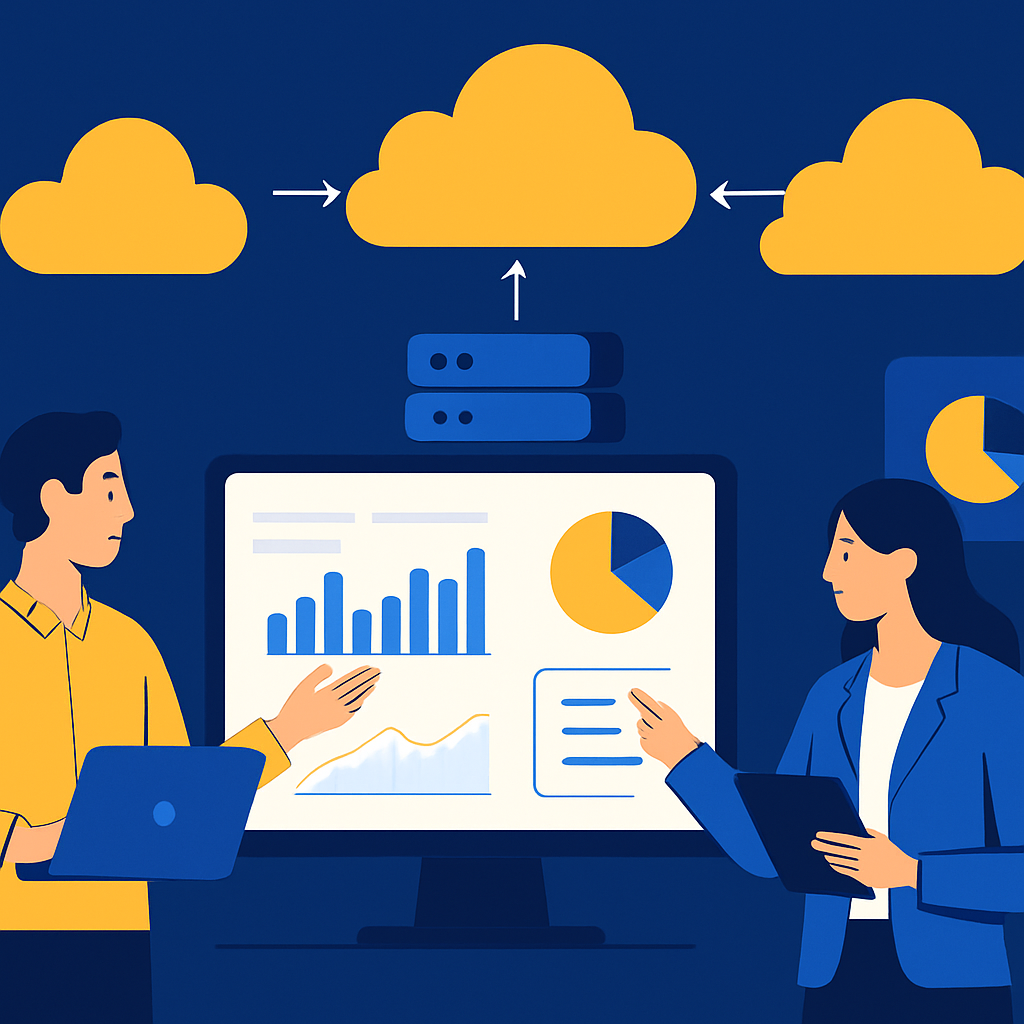
Why Legacy Modernization Matters More Than Ever
The gap between legacy infrastructure and AI capabilities isn't just a technical inconvenience—it's become an existential business risk. While competitors deploy AI to slash costs, accelerate time-to-market, and unlock new revenue streams, organizations trapped by outdated systems watch opportunities slip away.
We see this pattern repeatedly: A Fortune 500 company wants to implement AI-driven customer insights. Their data scientists build brilliant models. But when it's time to deploy? The legacy mainframe can't handle real-time processing. The monolithic architecture can't scale. Critical data remains locked in proprietary formats. The AI initiative stalls, and competitors gain ground.
Yet here's what most executives don't realize: modernization doesn't have to be the multi-year, business-disrupting nightmare they fear. Leading organizations are achieving AI-readiness in weeks, not years—without ripping and replacing systems, without massive capital expenditure, and without operational disruption.
The Real Cost of Waiting
Legacy systems extract hidden costs that compound daily:
Opportunity Cost: Every quarter without AI capabilities represents lost revenue and market share. Competitors using AI for demand forecasting, personalization, and process automation aren't just marginally better—they're operating at a fundamentally different level of efficiency.
Talent Drain: Top engineers don't want to maintain COBOL and decades-old Java monoliths. They join companies building the future, not maintaining the past. The best people leave, and knowledge walks out the door with them.
Technical Debt Interest: Like financial debt, technical debt compounds. Systems become more fragile, changes take longer, and risks multiply. What could be modernized in weeks today might take months next year.
Security Vulnerabilities: Legacy systems weren't built for today's threat landscape. Each passing day increases exposure to breaches that can cost millions in remediation, regulatory fines, and reputation damage.
Myth-Busting: The Modernization Misconceptions
Three dangerous myths prevent organizations from modernizing:
Myth 1: "Modernization Takes Years and Costs Millions"
Reality: Modern approaches like the strangler fig pattern and microservices decomposition allow you to modernize incrementally. QueryNow's clients achieve production deployments in 2-14 weeks, not 2-14 months.
A regional bank modernized their loan processing system—15 years old, written in .NET Framework 2.0—in 90 days. We didn't rewrite it. We extracted core business logic, wrapped it in modern APIs, deployed to Azure containers, and integrated AI-powered document processing. First-year ROI: 280%.
Myth 2: "We'll Lose Business-Critical Functionality"
Reality: The goal isn't to throw away working logic. It's to make it accessible, scalable, and AI-ready. Your decades of refined business rules represent competitive advantage—we preserve that while eliminating technical constraints.
Modern cloud platforms offer backwards compatibility, extensive testing frameworks, and gradual rollout capabilities that minimize risk. With proper governance and change management, modernization actually reduces operational risk by eliminating fragility.
Myth 3: "Our Systems Are Too Complex/Unique"
Reality: Every organization thinks their systems are uniquely complex. They rarely are. Whether it's a mainframe running COBOL, a sprawling Java monolith, or a tangle of SharePoint workflows from 2010, patterns exist for modernization.
We've modernized systems in regulated industries (finance, healthcare, energy) where compliance requirements are non-negotiable. We've tackled systems with zero documentation where the original developers retired years ago. Complex? Yes. Impossible? Never.
QueryNow's Rapid Modernization Methodology
Our approach balances speed with risk management through three key principles:
1. Assess with Precision
We start with a comprehensive 2-week assessment that identifies:
- High-value modernization targets (80/20 rule applies—20% of code typically delivers 80% of business value)
- Technical dependencies and integration points
- Data architecture and AI-readiness gaps
- Risk factors and mitigation strategies
- Quick wins that demonstrate value immediately
This assessment feeds directly into a prioritized roadmap aligned with business objectives, not just technical ideals.
2. Modernize Incrementally
We offer two proven programs:
2-Week Sprint: Perfect for targeted modernization—extract a critical component, modernize it, and deploy to production. Ideal for proving value quickly or addressing urgent bottlenecks.
90-Day Transformation: Comprehensive modernization covering infrastructure, data architecture, and application layer. Includes AI capability integration, security hardening, and team training.
Both approaches use Microsoft Azure's enterprise capabilities—containers, serverless functions, managed databases, and AI services—reducing operational overhead while maximizing flexibility.
3. De-Risk Through Validation
Every modernization phase includes:
- Parallel Running: New and old systems run simultaneously, validating behavior before cutover
- Automated Testing: Comprehensive test suites ensure functional parity
- Gradual Rollout: Feature flags and staged deployment minimize blast radius
- Rollback Plans: Clear procedures for reverting if issues arise
The AI-Ready Architecture
Modern AI initiatives require specific architectural capabilities that legacy systems simply can't provide:
Real-Time Data Access: AI models need fresh data, not batch exports from overnight jobs. Modern architectures expose data through APIs with millisecond latency.
Elastic Scaling: AI workloads are bursty—spiking during model training or when processing large batches. Cloud-native architectures scale automatically, paying only for resources used.
Microservices Architecture: AI capabilities integrate as services—document intelligence, predictive analytics, natural language processing—that plug into existing workflows without monolithic rewrites.
Secure Data Pipelines: Modern data platforms ensure AI models access clean, governed data while maintaining security and compliance.
Real-World Impact
Consider these recent outcomes from QueryNow clients:
Manufacturing: Global automotive supplier modernized their ERP integration layer, enabling real-time supply chain AI. Result: 35% reduction in stockouts, 20% faster order fulfillment, $4.2M annual savings.
Healthcare: Regional hospital network modernized patient scheduling systems, integrating AI-powered capacity planning. Result: 25% increase in patient throughput, 40% reduction in wait times, dramatically improved patient satisfaction.
Financial Services: Insurance company modernized claims processing, adding AI document extraction. Result: Claims processing time reduced from 7 days to 2 hours, 90% reduction in manual data entry, ROI in 6 months.
Getting Started: Your Modernization Journey
The path forward begins with honest assessment:
Where are your current systems preventing AI adoption? Is it data access? Processing speed? Integration complexity? Architecture inflexibility?
What are your business priorities? Customer experience? Operational efficiency? New revenue streams? Competitive positioning?
What's your risk tolerance? Can you afford a multi-year transformation? Or do you need rapid, incremental improvements?
Most organizations discover they can move faster than they thought possible—once they abandon the "all or nothing" mindset and embrace incremental modernization.
The Window Is Closing
AI isn't coming—it's here. Your competitors are already using it. Your customers expect experiences powered by it. Your board is asking about it.
Legacy modernization isn't about nostalgia or tidying up technical debt. It's about survival. The good news? Modern tools, proven methodologies, and experienced partners make rapid modernization achievable.
The question isn't whether you can afford to modernize. It's whether you can afford not to.
Ready to accelerate your modernization journey? Contact QueryNow for a complimentary AI-readiness assessment. We'll identify your highest-impact modernization opportunities and show you exactly how quickly you can move from legacy constraints to AI capabilities.
Your competitors aren't waiting. Neither should you.


